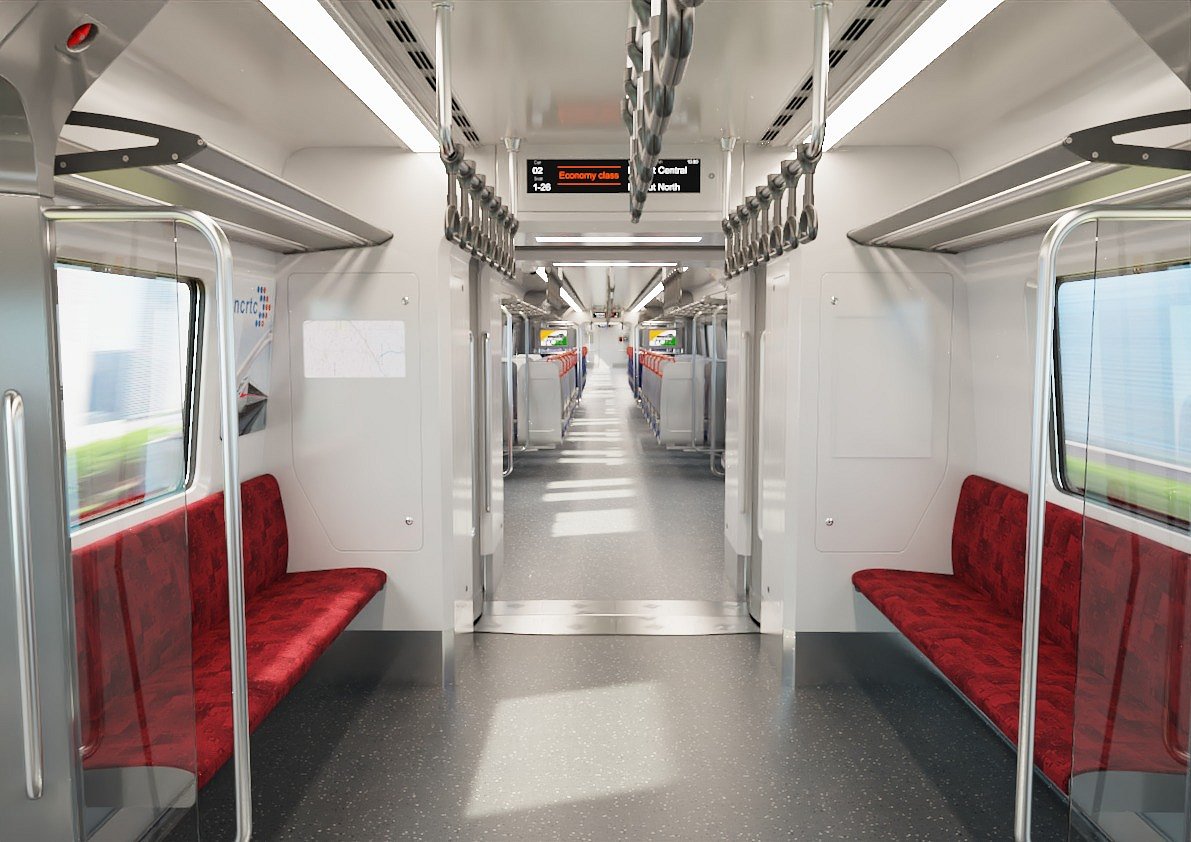Snapshot
The Delhi-Ghaziabad-Meerut RRTS corridor is 82 km long and will have around 70 km elevated section and 12 km underground section.
According to NCRTC officials, the trial runs of the RRTS train will first be conducted on the priority section between Sahibabad and Duhai and is likely to start by the end of this year.
Gearing up to opening the priority section of the Delhi-Ghaziabad-Meerut corridor for the public, the National Capital Region Transport Corporation (NCRTC) has achieved a significant milestone towards bringing in India’s first Regional Rail on a test trial run ahead of schedule.
The NCRTC is establishing India’s first Regional Rapid Transit System (RRTS), a rail-based, high-speed regional commuter transit system, from Delhi to Meerut via Ghaziabad.
Powered by the recently charged NCRTC’s 25 kV Traction system, the first RRTS trainset did a maiden test run on its depot tracks on Sunday.
NCRTC MD Vinay Kumar Singh and the senior management team were onboard the train during the test run.
The newly commissioned LTE communication network was also successfully demonstrated during the testing. The trial run on the priority section is expected to start by the end of this year and is likely to be open to the public by 2023.
Exuding confidence in commissioning the project in time, Singh congratulated the directors and heads of the departments for working towards achieving the feat.
With the viaduct of the entire Priority Section almost complete and all five stations are also being constructed expeditiously, the work of track laying and installation of OHE and signalling equipment is being carried out at the moment.
NCRTC is using several state-of-the-art systems for the first time in India for the upcoming operation of the RRTS trains. RRTS will become the world’s first network using hybrid Level 3 technology of the European Train Control System over LTE network, which will be implemented in a phased manner. In the first phase, ETCS Level 2 will be implemented.
The Delhi-Ghaziabad-Meerut RRTS corridor is 82 km long and will have around 70 km elevated section and 12 km underground section.
The 17-km long priority section between Sahibabad and Duhai is targeted to be commissioned by 2023 and the full corridor by 2025, they said.
The priority section of the Delhi, Ghaziabad, Meerut RRTS corridor has five stations — Sahibabad, Ghaziabad, Guldhar, Duhai, and Duhai Depot.
The first train set of the RRTS was handed over to the NCRTC by Alstom India as it rolled out of its manufacturing plant in Savli in Gujarat’s Vadodara district on May 7 this year.
The implementation of RRTS is part of the ‘Comprehensive Action Plan’ (CAP) for Air Pollution Control in Delhi & NCR’ and the recommendation of the ‘High Powered Committee on Decongesting Traffic in Delhi’.
Once operational, a shift of traffic from private modes to a rapid rail system and multimodal integration and seamless connectivity will reduce the energy use by the transport sector in the National Capital Region and promote ease of living and business within the NCR. It will also lead to a significant reduction in pollution in the region.
It is envisaged that the savings achieved with efficient operations would be recurring in nature and would directly impact the long-term sustainability of RRTS.


